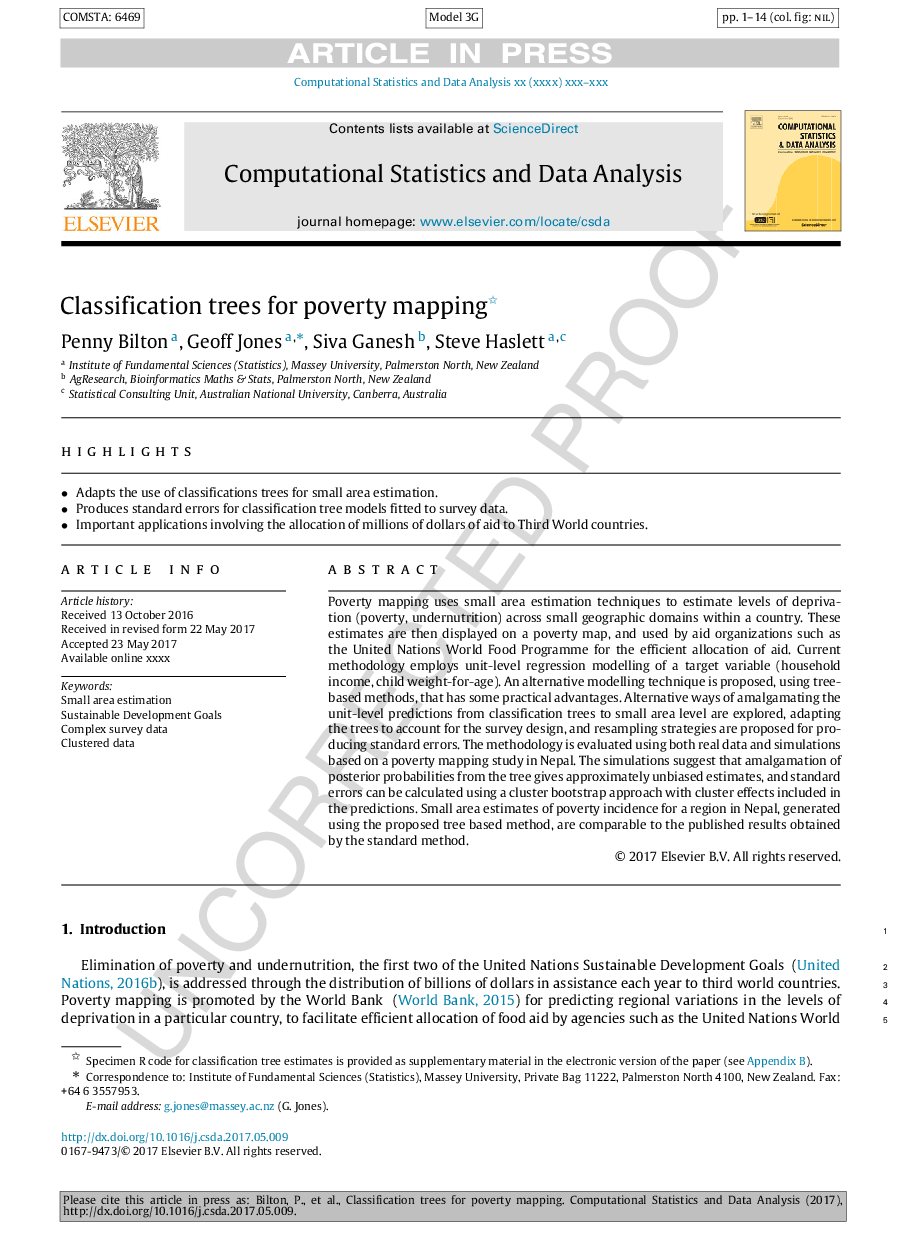| Article ID | Journal | Published Year | Pages | File Type |
|---|---|---|---|---|
| 4949236 | Computational Statistics & Data Analysis | 2017 | 14 Pages |
Abstract
Poverty mapping uses small area estimation techniques to estimate levels of deprivation (poverty, undernutrition) across small geographic domains within a country. These estimates are then displayed on a poverty map, and used by aid organizations such as the United Nations World Food Programme for the efficient allocation of aid. Current methodology employs unit-level regression modelling of a target variable (household income, child weight-for-age). An alternative modelling technique is proposed, using tree-based methods, that has some practical advantages. Alternative ways of amalgamating the unit-level predictions from classification trees to small area level are explored, adapting the trees to account for the survey design, and resampling strategies are proposed for producing standard errors. The methodology is evaluated using both real data and simulations based on a poverty mapping study in Nepal. The simulations suggest that amalgamation of posterior probabilities from the tree gives approximately unbiased estimates, and standard errors can be calculated using a cluster bootstrap approach with cluster effects included in the predictions. Small area estimates of poverty incidence for a region in Nepal, generated using the proposed tree based method, are comparable to the published results obtained by the standard method.
Related Topics
Physical Sciences and Engineering
Computer Science
Computational Theory and Mathematics
Authors
Penny Bilton, Geoff Jones, Siva Ganesh, Steve Haslett,
